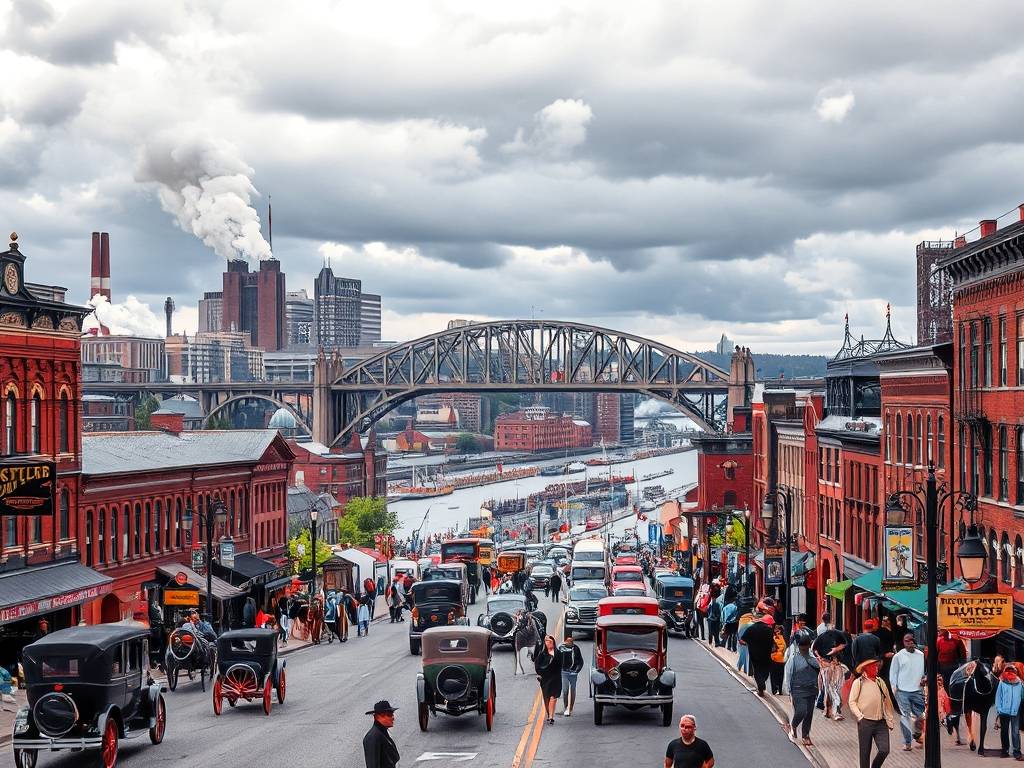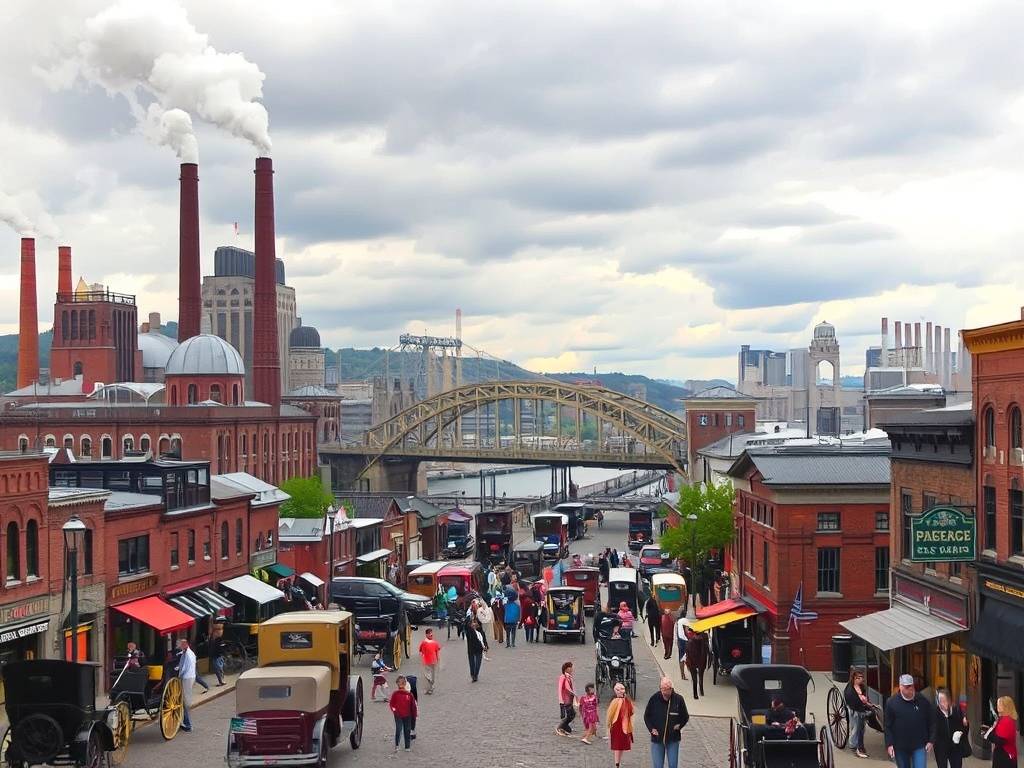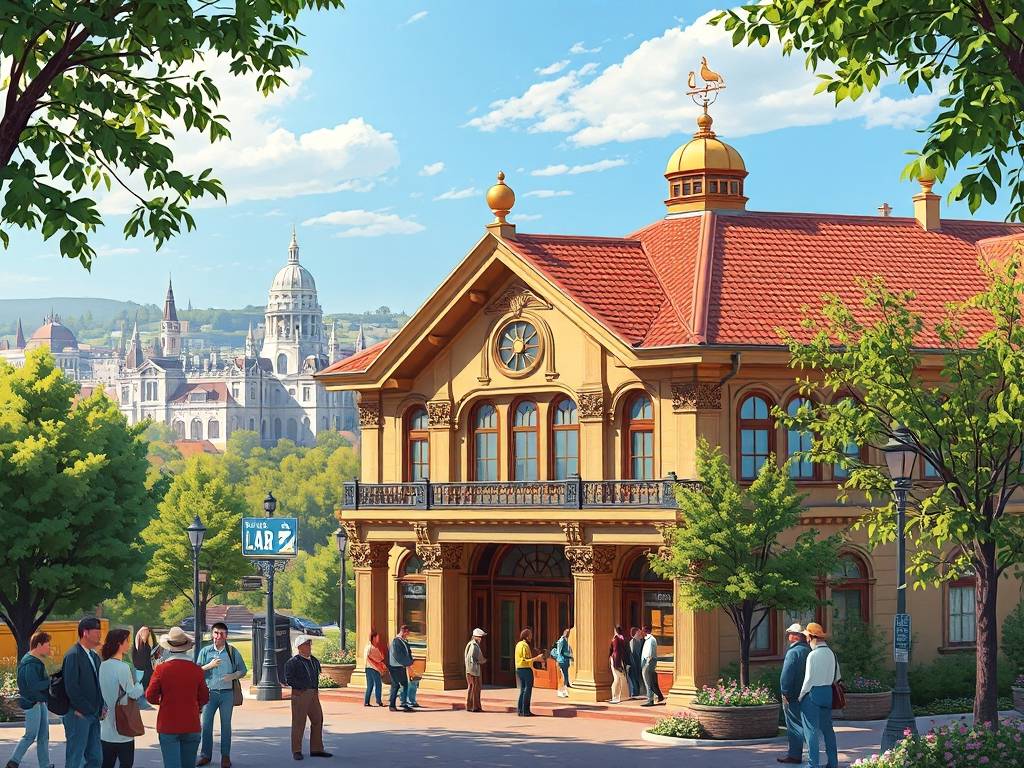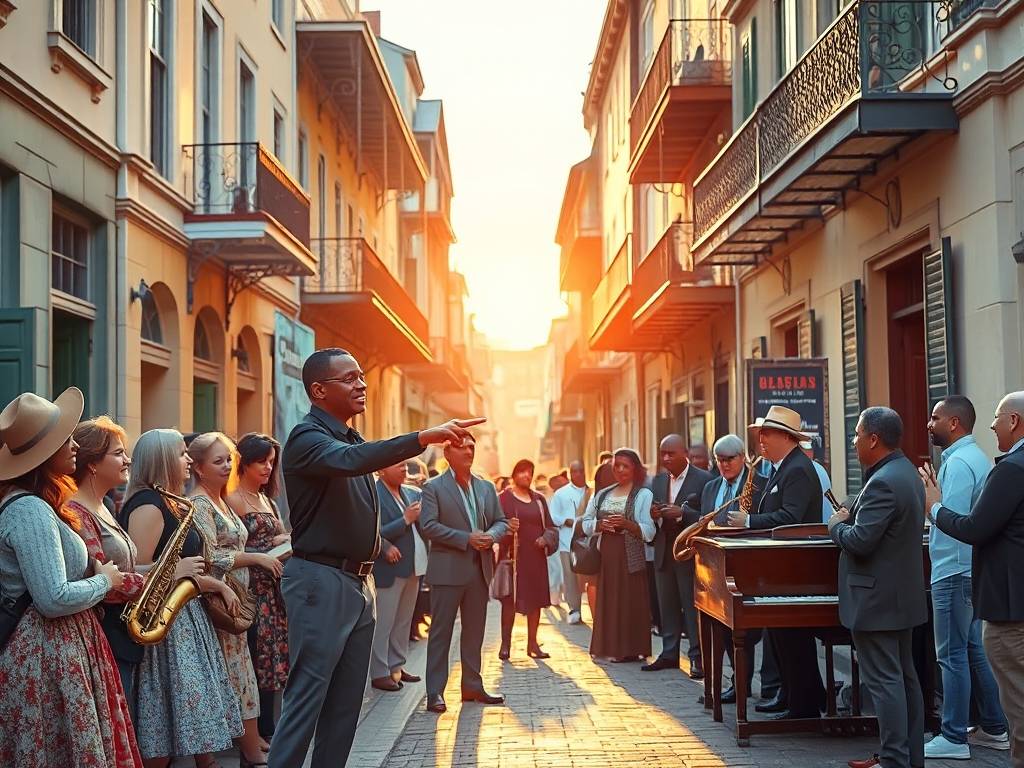USA Travel
US Travel: Industrial Revolution Sites in Pennsylvania’s Pittsburgh
Forged in Fire: Exploring Pittsburgh's Living Legacy of the Industrial Revolution
Close your eyes and picture the Industrial Revolution. What comes to mind? Perhaps images of soot-covered workers, towering smokestacks belching black clouds, and the relentless clang of steel on steel. For much of the 19th and 20th centuries, this was the very essence of Pittsburgh, Pennsylvania. This city didn't just participate in the Industrial Revolution; it powered it, forged its bones, and built its spine. Today, a journey to Pittsburgh is a journey into the heart of this transformative era. It’s a chance to walk in the footsteps of industrial giants, to understand the sweat and innovation that built a nation, and to witness an incredible story of urban rebirth. This is your guide to exploring the unmissable Industrial Revolution sites in Pennsylvania.
Your first stop must be the crown jewel of Pittsburgh's heritage: the Carrie Blast Furnaces. Located in the nearby town of Swissvale, this is not a manicured museum exhibit; it's a raw, awe-inspiring time capsule. Standing at the base of the 92-foot-tall Furnace #6 is a humbling experience. You can feel the ghost of the intense heat that once melted iron ore at 2,800 degrees Fahrenheit. This National Historic Landmark was part of the mighty Homestead Steel Works and operated from 1907 to 1978. A guided tour here is essential. You'll traverse gantries, peer into the massive cast houses, and see the "Mon Valley" stretching out below. The furnaces are also an unexpected open-air art gallery, home to the "Rivers of Steel" art installations and the famous "Deer Head" sculpture made from reclaimed materials. It’s the most profound way to grasp the sheer scale and physicality of steel production in Western PA.

After the visceral experience of the furnaces, head to the Rivers of Steel: The Bost Building in Homestead. This beautifully restored 1892 hotel was the headquarters for the Amalgamated Association of Iron and Steel Workers during the infamous Homestead Strike of 1892. This event was a pivotal and violent labor clash that shaped the future of American worker's rights. Here, the narrative deepens. You move from the how of steelmaking to the who. Exhibits detail the lives of the workers—the immigrants from Eastern Europe, Ireland, and Germany—who risked everything for a chance at a better life. This site provides the crucial human context, answering the question of what life was like for workers in Pittsburgh's steel mills. It’s a poignant reminder of the community and conflict that defined the industry.
For a panoramic view of this industrial landscape, ride the Duquesne Incline up Mount Washington. Since 1877, this funicular has carried mill workers and now tourists up the steep hillside. From the observation deck, you are granted the iconic postcard view of Pittsburgh's Golden Triangle, with its three rivers converging. This is where the story of Pittsburgh's geography becomes clear. You can see how the Allegheny and Monongahela Rivers meet to form the Ohio, creating the perfect water highway to transport coal and ore. You can almost trace the paths of the barges that fed the insatiable mills below. It’s the perfect spot to understand why Pittsburgh became the "Steel City" and to appreciate its stunning modern transformation.
No exploration of Pittsburgh's industrial past is complete without a visit to the Heinz History Center, an affiliate of the Smithsonian Institution. While it covers a broad swath of Western Pennsylvania history, its exhibits on industry are superb. You'll find an entire section dedicated to "Pittsburgh: A Tradition of Innovation," which goes beyond steel. It showcases the region's contributions to glassmaking, aluminum, and, of course, the famous H.J. Heinz Company. It connects the dots, showing how the industrial might that built the city also fueled other sectors of the economy. It’s a fantastic indoor complement to the outdoor sites, offering a more comprehensive and climate-controlled historical overview.
For a different perspective, consider a trip to The Frick Pittsburgh in the city's Point Breeze neighborhood. The Frick estate offers a glimpse into the life at the very top of the industrial pyramid. Henry Clay Frick was the hard-nosed coke and steel baron who was Andrew Carnegie's partner. His magnificent mansion, Clayton, his extensive art collection, and the serene gardens stand in stark contrast to the gritty reality of the mills and worker housing. It’s a fascinating study in the vast economic disparities of the Gilded Age and shows the immense wealth that industry generated for a select few.
Finally, weave these threads together with a self-guided tour of Pittsburgh's industrial architecture. As you walk through the Strip District or drive across the city's many bridges, look up. The Armstrong Tunnels, the numerous historic bridges (like the Smithfield Street Bridge), and the robust, stone-built warehouses are all testaments to the engineering prowess of the era. These are the bones of the old city, repurposed for a new age. Many old factories are now chic apartments, tech offices, and restaurants, symbolizing Pittsburgh's successful transformation from a steel town to a hub for tech and medicine.

Planning your Pittsburgh industrial heritage tour is easy. The best time to visit is from spring to fall when all the outdoor sites are fully accessible. Wear comfortable, closed-toe shoes for the Carrie Blast Furnaces tour—this is an active, industrial environment. Allow at least two to three days to fully appreciate these sites without rushing. Combining the raw power of the Blast Furnaces, the human stories at the Bost Building, and the grand overview from the Incline will give you a deeply layered and unforgettable understanding of this critical chapter in American history.
Pittsburgh’s story is not one of a forgotten past, but of a living legacy. It’s a city that proudly wears the scars of its industrial might while embracing a vibrant future. To explore these sites is to understand the resilience, innovation, and sheer human effort that forged modern America. So come and discover the city where the fires of industry burned brightest, and see for yourself how the sparks of that era still light the way forward.
相关文章
- US Travel: Backpacking in California’s Sequoia National Park
- US Travel: Colonial History Tours in Virginia’s Williamsburg
- US Travel: Civil War Battlefield Visits in South Carolina’s Fort Sumter
- US Travel: Native American Heritage Sites in Arizona’s Monument Valley
- US Travel: Revolutionary War Museums in Massachusetts’s Lexington
- US Travel: Historic Plantation Tours in Louisiana’s New Orleans Vicinity
- US Travel: Jazz History Walks in Louisiana’s New Orleans French Quarter
- US Travel: Gold Rush Museums in California’s Sacramento
- US Travel: Civil Rights Movement Tours in Alabama’s Birmingham
- US Travel: Victorian Mansion Tours in Rhode Island’s Newport
发表评论
评论列表
- 这篇文章还没有收到评论,赶紧来抢沙发吧~


